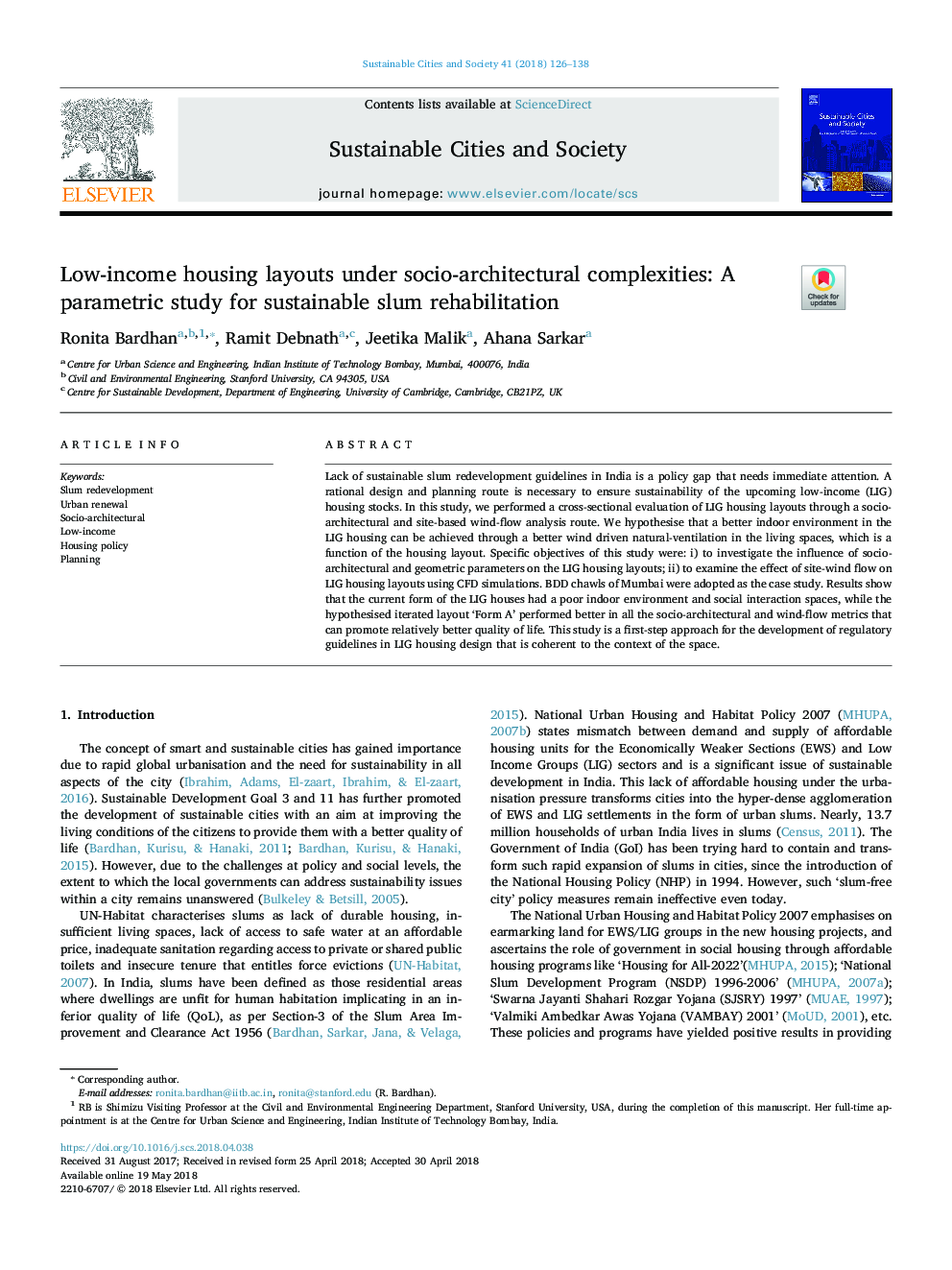| Article ID | Journal | Published Year | Pages | File Type |
|---|---|---|---|---|
| 6774897 | Sustainable Cities and Society | 2018 | 13 Pages |
Abstract
Lack of sustainable slum redevelopment guidelines in India is a policy gap that needs immediate attention. A rational design and planning route is necessary to ensure sustainability of the upcoming low-income (LIG) housing stocks. In this study, we performed a cross-sectional evaluation of LIG housing layouts through a socio-architectural and site-based wind-flow analysis route. We hypothesise that a better indoor environment in the LIG housing can be achieved through a better wind driven natural-ventilation in the living spaces, which is a function of the housing layout. Specific objectives of this study were: i) to investigate the influence of socio-architectural and geometric parameters on the LIG housing layouts; ii) to examine the effect of site-wind flow on LIG housing layouts using CFD simulations. BDD chawls of Mumbai were adopted as the case study. Results show that the current form of the LIG houses had a poor indoor environment and social interaction spaces, while the hypothesised iterated layout 'Form A' performed better in all the socio-architectural and wind-flow metrics that can promote relatively better quality of life. This study is a first-step approach for the development of regulatory guidelines in LIG housing design that is coherent to the context of the space.
Related Topics
Physical Sciences and Engineering
Energy
Renewable Energy, Sustainability and the Environment
Authors
Ronita Bardhan, Ramit Debnath, Jeetika Malik, Ahana Sarkar,
